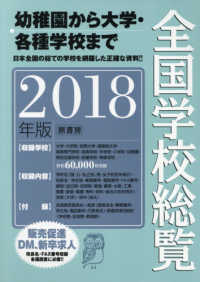Full Description
Up until approximately 20 years ago, the idea that the central nervous system (CNS) and components of the immune system were dynamically interactive was considered impossible (or at least highly unlikely) as the CNS was judged an immunosuppressive environment based upon experimental evidence highlighting the survival of tissue grafts within the brain. Additional evidence supporting this viewpoint included (i) the presence of the blood-brain barrier (BBB) which p- vides a physical and physiological obstruction that is difficult for cells and mac- molecules to cross, (ii) the relative absence of MHC class I and II expression on CNS cells like astrocytes and neurons, and (iii) lack of abundant antigen presenting cells (APC) which are required for the generation of an adaptive immune response. However, in spite of these obstacles, it is now well-accepted that the CNS is r- tinely subject to immune surveillance under both normal as well as diseased con- tions. Indeed, activated cells of the immune system such as T and B lymphocytes and monocyte/macrophages readily infiltrate and accumulate within the CNS f- lowing microbial infection, injury, or upon development of autoimmune responses directed toward resident antigens of the CNS.
Contents
Section I - Microglia and CNS Disease.- 1. Microglia: a CNS-Specific Tissue Macrophage.- Shweta S. Puntambekar, Jonathan M. Doose, Monica J Carson.- 2. Mechanisms of Microglial Activation by Amyloid Precursor Protein and its Proteolytic Fragments.- S. A. Austin and C. K. Combs.- 3. Pericytes.- Martin Krüger and Ingo Bechmann.- 4. Imaging Microglia in the Central Nervous System: Past, Present, and Future.- Dimitrios Davalos and Katerina Akassoglou.- Section II - Innate Immune Responses within the Brain.- 5. Cytokines in CNS inflammation and disease.- Malú G. Tansey and Tony Wyss-Coray.- 6. Arachidonic acid metabolites: Function in neurotoxicity and inflammation in the central nervous system.- and T.J. Montine.- 7. Pattern Recognition Receptors in CNS Disease.- Pamela A. Carpentier, D'Anne S. Duncan, Stephen D. Miller.- 8. The Complement System in the CNS: Thinking again.- Andrea J. Tenner and Karntipa Pisalyaput.- Section III - Chemokines and CNS Disease.- 9. Chemokines and autoimmune demyelination.- Michaela Fux, Jason Millward, and Trevor Owens.- 10. Chemokine actions in the CNS: Insights from transgenic models.- Marcus Müller and Iain L. Campbell.- 11. Chemokines and Spinal Cord Injury.- Maya N. Hatch and Hans S. Keirstead.- 12. The Usual Suspects: Chemokines and Microbial Infection of the Central Nervous System.- Michelle J. Hickey, Linda N. Stiles, Chris S. Schaumburg, and Thomas E. Lane.- Section IV - Antigen Presentation and Immune Responses within the Brain.- 13. CNS Dendritic Cells in Inflammation and Disease.- Samantha L. Bailey and Stephen D. Miller.- 14. MHC class I Expression and CD8+ T Cell Function: Towards the Cell Biology of T-APC Interactions in the Infected Brain.- Cornelia Bergmann and Pedro Lowenstein.







